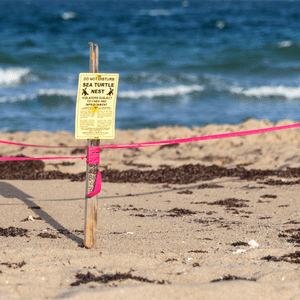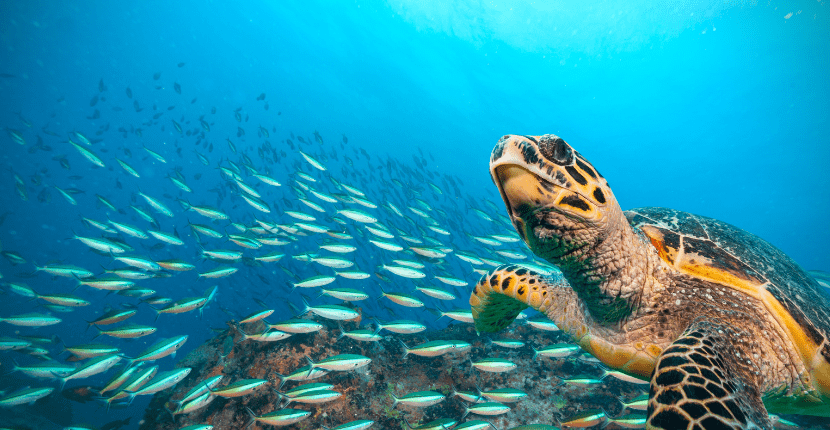Don’t touch the sea turtles! In The Happy Hollisters and the Sea Turtle Mystery by Jerry West, mischievous Sue Hollister takes a brief ride on the slippery shell of a massive sea turtle, an activity that’s now illegal under the Federal Endangered Species Act. While little Sue’s actions might earn her some heavy fines today, she and her siblings still learn many facts about sea turtles—and some important lessons about protecting and respecting them—throughout their adventures in The Sea Turtle Mystery.
Sea turtles, sometimes also called marine turtles, have lived in Earth’s waters for over 100 million years. These shelled creatures can grow up to four feet in length and weigh anywhere from 240 to 420 pounds. They’re known for their lengthy life spans and are thought to be able to live up to 50 years in the wild, though some scientists have documented sea turtles that they believe are over 80 years old.
Sea turtles can be found all over the world, but they prefer warm and tropical places like Florida, Hawaii, Indonesia, and Papua New Guinea. Although they can breathe on land, sea turtles spend most of their long lives in the water. Most sea turtles are omnivores, eating everything from jellyfish and squid to seaweed and anemone. However, some are herbivores that survive on plant-based food sources like algae or sea grass.
When sea turtles do visit the land, it’s to lay eggs! As the Hollisters learn from a friendly conservationist in The Happy Hollisters and the Sea Turtle Mystery, female turtles typically return to land once every two to four years for a single nesting season. Since the baby turtles need to be able to breathe through their shells, sea turtles must lay their eggs on the land, rather than in the water where they will eventually spend most of their time.
During her nesting season, a female sea turtle lays up to 200 eggs, each broken up into batches called “clutches.” To protect her eggs, the turtle digs a hole in the sand using her back flippers. Then, she buries the clutches about two feet beneath the sand. When the eggs hatch about two months later, it’s up to the new babies to dig themselves out and find their way to the ocean. Interestingly, sand temperature plays a big role for the baby turtles. If the sand is warm, the turtles are more likely to be female, while cooler sand tends to produce more males.
Unfortunately, being buried in the sand makes sea turtle eggs very vulnerable. The nests can be easily disturbed or destroyed by beachgoers who might not realize the nests are nearby or can be pilfered by animals like raccoons who want to eat the eggs. Sea turtle nests are also often the frequent targets of poachers, as sea turtle eggs are considered a delicacy in certain parts of the world. Due to threats like these, it can be difficult for sea turtles to reproduce effectively, which is why they’ve become an endangered species.

by Libby Svenson Kennedy
Sources:
Research notes, Andrew Svenson Archives of The Hollister Family Properties Trust
https://www.worldwildlife.org/stories/how-long-do-sea-turtles-live-and-other-sea-turtle-facts
https://www.fisheries.noaa.gov/feature-story/10-tremendous-turtle-facts


